
Ceasefire Now! Socialists Organizing to End the Occupation and Free Palestine
Regular listeners of Revolutions per Minute will be familiar with our coverage of Palestine solidarity work within the Democratic Socialists of America. We recognize that the struggle for Palestinian liberation and the violence of settler colonial displacement are both ongoing. Tonight, our coverage continues with a live conversation with Sumaya and Daphna, two NYC-DSA members and organizers with deep experience in Palestine solidarity work.
We discuss this month’s outbreak of violence in Palestine and Israel, which has led to the genocidal and illegal bombardment of Gaza happening as we speak. Socialists in New York and across the country have joined forces with the multi-cultural, international movement for Palestine solidarity, with hundreds of thousands flooding the streets of major cities, conducting civil disobedience, and calling on the country’s leadership to end United States support for Israel and a ceasefire now. Join us to learn more about why Palestine liberation is a priority for socialists.
Visit https://socialists.nyc/no-money-for-massacres/ to find an upcoming NYC-DSA-endorsed solidarity phone bank or action. Visit gazaispalestine.com to find or post an upcoming protest in your city anywhere in the United States.
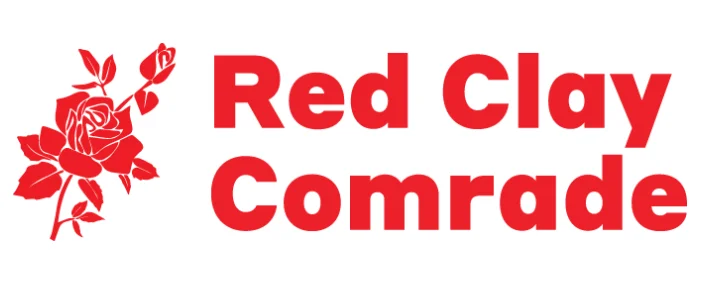
Building a Socialist Labor Movement



Every day, billions of working people on Earth toil to maintain a capitalist economy they never asked for. While technological advances and general prosperity have spread beyond the borders of the most advanced countries, the “golden age” of capitalism is over. For the majority of people on the planet, including in the United States, life is getting harder. Capitalism is working overtime to preserve the power and profits of the wealthy at the expense of the rest of us.
In light of this, DSA’s goal is to fight for all working people’s ability to democratically control their own lives in all areas of society and the economy. To achieve that goal, we need two things: the involvement of millions to make a mass movement, and the leverage to win back power from the capitalist class. The only way DSA is going to get what we need to win is by organizing as workers and uniting with organized labor, so we can attack the source of capitalists’ power: their profits.
Labor unions represent the only organized force with the capacity and the leverage to win against capitalists outright. Millions of union members run a collective, dues-funded project to organize and fight for a better life for all working people. So this year, Atlanta DSA has prioritized building relationships with labor unions, educating our members and the public on the centrality of workplace organizing and the importance of determining our own path, independent of big-money donors and politicians.

Most excitingly, with the United States having just experienced its third “Hot Labor Summer” in a row, our chapter has prioritized strike support. Following our solidarity work last year with workers at Nabisco, John Deere, and Starbucks, this summer Atlanta DSA democratically voted to prioritize supporting UPS Teamsters fighting to win higher wages and respect on the job in the largest private-sector contract this country has seen in decades. Atlanta DSA worked for months, in coordination with the DSA National Labor Commission, to show up for the UPS Teamsters. The Teamsters we supported organized to build strong shop-floor support for the contract fight, while the whole of our chapter has met with rank-and-file leaders to learn how we can best provide key support. We hosted educational panels, talked with and interviewed rank-and-file Teamsters, showed up to practice pickets, and canvassed to build community support for the contract fight. In the end, 86% of voting Teamsters approved the new contract, which included raises, air conditioning in trucks, and an end to two-tier jobs.This was only won through a concerted strike campaign that scared UPS into concessions to avoid responsibility for a costly strike.

Our strike solidarity campaign provided an avenue for friends of labor from all across the Atlanta metro area to become involved, and we organized supporters across the community to understand the stakes of this fight. In a word, we’ve helped begin rebuilding the connections between labor unions and the communities they fight for in Atlanta. Now, with UAW Big 3 workers on strike across the country, we are also mobilizing to join workers picketing at the Chrysler parts distribution center in Morrow, GA.

As our members gained experience and our organization gained credibility for the material solidarity we showed to Teamsters, Atlanta DSA’s Labor Committee has worked hard to build positive relationships with other unions, both rank-and-file member-leaders and staff alike. While many unions are still struggling under the weight of repressive governments and hostile corporate management, it becomes a common refrain that “we need to organize our own members before we can devote resources to other groups”. However, as socialists know, an injury to one is an injury to all. A strong labor movement is one that moves together, in solidarity with workers everywhere, because it makes us stronger in the long run. Capitalists love to divide and conquer, so when we can pull a variety of groups together to go to bat for the Teamsters, Starbucks Workers United, United Campus Workers, and the railroad unions, we can show we are stronger than them.
As we’ve helped lay the groundwork for stronger community-labor connections, and a more coherent labor movement, Atlanta DSA is also providing support for workers looking for help organizing at work, even before they are ready to approach a union. We plan to encourage more of our members to volunteer and receive training with the Emergency Workers Organizing Committee (EWOC) (a joint effort between DSA’s National Labor Commission and United Electrical Workers) and use those skills to support new organizing drives across Georgia, including food and retail service workers.
We also support our own members and allies through a monthly Workplace Organizing Roundtable. By providing a space for groups of workers from different industries to come together and talk shop, Atlanta DSA has deepened our institutional knowledge of the organizing terrains in various sectors of the economy. Education, tech, food service, manufacturing, and logistics workers share ideas and learn together, forming a nucleus of organizing knowledge so we can transform the struggle for workplace dignity and democracy.
Through these roundtables, members have been able to discuss methods and techniques for organizing, the history of different kinds of labor struggles, and our plans for organizing in our respective industries. In the coming months, we will expand and deepen our efforts so we can bring in even more people from around the Atlanta area and fight to create a powerful, democratic labor movement.
Just this last month, Atlanta DSA led and organized a labor contingent to the Atlanta Pride Parade, alongside the Atlanta-North Georgia Labor Council, Starbucks Workers United, United Campus Workers, the Teamsters LGTBQ Caucus, Unite Here, AFA-CWA, IAM, and more organizations. As workers in the South, who are subject to a right-wing and repressive state government, it’s important to not just build democratic and militant unions, but also progressive unions, willing to champion racial justice, trans rights, bodily autonomy, and more!

Atlanta DSA’s labor work this year has laid a lot of groundwork that we can use to strengthen the organization of working people into a working class, capable of fighting for itself. We’ve brought together groups that haven’t worked together in the past, beginning to heal the divides wrought by decades of neoliberal attacks on working people. DSA members have advocated for a more militant, democratic, and progressive labor movement in the Atlanta area – one that allows us all to fight for political and economic power, free from the influence of big money institutions that don’t have our best interests at heart. Through our work, Atlanta DSA is helping to once more cohere a working class movement that can fight for all of us. It’s exciting to be a part of, and you should be a part of it, too.
So what’s next? Get involved in our labor work by joining a weekly meeting, checking out a monthly workplace roundtable, get organized with Emergency Workplace Organizing Committee (EWOC), and learn more about what we do!
The post Building a Socialist Labor Movement appeared first on Red Clay Comrade.


Palestine Will Be Free
San Antonio DSA stands in solidarity with Palestine’s decades-long struggle against Israeli occupation. We mourn all innocent lives lost since October 7th, and recognize that the root cause is Israel’s colonial system of apartheid and its systemic violence against the Palestinian people.
Zionism has systematically killed tens of thousands, displaced hundreds of thousands, and subjugated millions. Now, Israel is committing a genocide against Palestinians in Gaza. Thousands of Gazans have already been killed via an indiscriminate bombing campaign; food, water, electricity, and medicine have been blockaded, and a full ground invasion is looming.
Throughout all of this, the US has played a crucial role in backing Israel militarily and diplomatically. We demand an immediate end to Israel’s military assault against Gaza, and to all US military and economic aid to Israel. We also call for an end to the occupation as a whole. We support Palestinian resistance against blockades, ethnic cleansing, apartheid, and genocide.
We call on all San Antonians to stand up for Palestine, and to follow the leadership of local Palestinians, in particular San Antonians for Justice in Palestine (SAJP). We must expose the ignorance and hypocrisy of local politicians who “stand with Israel” but are silent on settlements, ethnic cleansing, and apartheid.
Together we can challenge the local connections to Israeli oppression and open up a front for Palestinian liberation.
From the river to the sea, Palestine will be free.
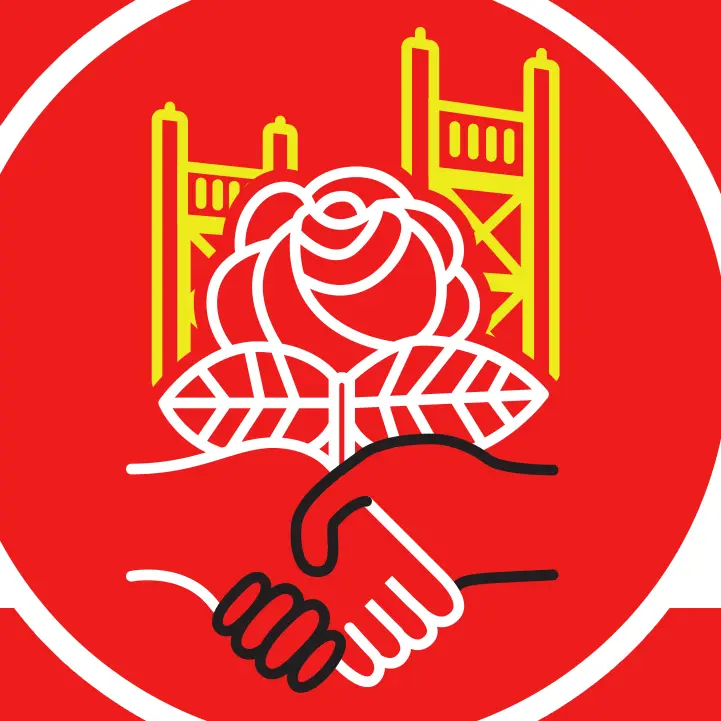

Procedural Overhead: On An Upcoming Debate at Sacramento DSA Local Convention 2023
For reference, see the 2023 SacDSA Local Convention packet - https://docs.google.com/document/d/1DWZuXSlkLUfKhENPAq6e9DwhCfBt2w__JJxkl2seF1E/edit?usp=sharing
By Benjamin Arriaga
My friend and comrade Jimbo Jackson, and fellow Socialist Majority caucus affiliate, submitted three proposed bylaw amendments for the upcoming local convention. Although my comrade and I affiliate with the same national caucus in DSA, I write this to share my disagreement with his proposals for our local chapter. However, I do make an exception of what I would like to see amended at least in his third bylaw amendment, as detailed below. In the interest of transparency: at this time, we are both expected to step in as Convention Chair and Convention Parliamentarian. I have taken steps to enlist other comrades and receive assurances from them that they will accept these roles when his proposals and my proposals reach the floor. I spoke directly with Comrade Jackson about my position on his proposals and that I would be submitting my position statement for publication with a copy provided to him before its online publication. This autumn season I also began my first annual term as a State Council Delegate to California DSA for our chapter. (FYI: We are allotted four delegates and our chapter has yet to hold an election for the fourth seat.)
First, a word about our process: According to our chapter bylaws, our chapter’s membership is required to hold a local convention annually. Despite the fact that we technically have the ability per these same bylaws to amend the bylaws at any of our general membership meetings, I think that specifically holding an annual local convention encourages us to highlight for this type of meeting a chance to address long-term timescale questions. In comparison with a labor union federation it can serve the same function as a “leadership summit” or in a capitalist enterprise, the “company retreat.” In other words, this type of meeting is intended for asking questions about our structure, our capacity, our strategy, and ultimately for affirming our vision as a democratic socialist organization.
On Comrade Jackson’s Bylaw Amendment #1: Pertaining to CA-DSA delegate role, I urge to vote Nay. I plan to vote Nay due to my observation that this would confine the imagination necessary for nonsectarian representative democracy as a principle in our organization. Allowing for our elected delegates (myself included) to exercise initiative, to communicate well with others, or to find ways to collaborate is naturally an extension of the basic practice of representative democracy. We elect a person to do things. If we don’t like what they are doing, then we let them know, and if they don’t compromise, then we choose someone else by majority rule. Additionally, the original language would also confine the expression of dissenting opinions and the “pledge not to act unilaterally” is so broad as that it might discourage our delegation from adding to the discussion or the work of building the very new California DSA State Council without seeking endless, additional approval. Effective, nonsectarian, representative democracy does not require stipulated language of this type.
By contrast, I urge to vote Yay on the California DSA Delegate Term Activity Resolution I authored and submitted. I agree with Comrade Jackson that California DSA would indeed benefit from collaboration but I argue that this does not need to be stipulated through a bylaw amendment. Instead, my resolution would prompt myself and my fellow State Council Delegates from our chapter to use our heads and take lead on action items to help create a political program for our communities and lead by example at California DSA State Council.
On Comrade Jackson’s Bylaw Amendment #2: Pertaining to political priorities of the local chapter, I also urge to vote Nay. Although one or more of the concerns motivating this amendment are valid, such as “a need to improve communication and coordination as a chapter,” I do not think restricting ourselves through our bylaws to a specific number of priorities would actually improve our chapter’s operations. We cannot legislate or formally deliberate a shortcut around the work of organizing.
The question of our priorities is an organizing question, just as much as it is also a political one that faces every member regardless of holding an official leadership role. It requires setting aside ample time to meet and discuss and develop plans with other comrades to choose what we shall focus on achieving and by when. To assist with that effort, which involves political education, I submitted the Standard Spoken Introductions Resolution to emphasize a new general practice. We may call this a form of popular discipline, perhaps, for our members to take up if they agree with me about its necessity. I think when we practice saying a consistent hard brief pitch of what democratic socialism means, popularizing that kind of message discipline internally can take us on a path to resolve ourselves to be consistent in our messaging overall and the criteria by which we adopt future priorities that can matter to our communities.
Finally, regarding Comrade Jackson’s Bylaw Amendment #3: Pertaining to clarifying committee operations and the organizer role, I urge that someone move to amend its original language when it is on the floor. My recommendation may be best laid out in the following points: • Strike out all language that raises the needed participation threshold to 5 dues-paying members to form a committee and keep our status quo requirement of 3. • Strike out all proposed changes to the Committee Operations subsection of our bylaws. • Accept the proposed change to the Organizer subsection that strikes out the stanza with the “ultimate responsibility” and “liaison” clauses. • Accept the proposed addition of a Committee Membership subsection (while changing to 3 signatories instead of 5 signatories). • Insert after the sentence starting with “Only SacDSA members in good standing” and ending with “committee members,” the following language: • “Committee meeting attendees who are not SacDSA members may call themselves fellow-travelers so long as a member or members in good standing sponsors or takes lead in helping them learn about DSA and assume(s) a responsibility to the chapter for their fellow-traveler’s actions when participating in public-facing political activity.”
At any future general membership meeting, we can make two motions: any dues-paying member could move to introduce a bylaw amendment to expand our Steering Committee to include our Committee Chairs; any dues-paying member can also move to dismantle a committee that the majority agrees with dismantling, howsoever it may be justified during any debate if and only after someone seconds that motion.
I grant that Comrade Jackson is well-intended with his proposals. This does not change my worry that his proposals seem like attempts to reshape our structure to more strictly mimic a democratic centralist model. Democratic centralism, in simple terms, involves a periphery that reports to a center and a center that is elected from a periphery, etc., but that tends to fix and concentrate authority at the center once questions of debate are considered settled. This model has gained a nostalgic following in some groupings outside of DSA but also within whole national caucuses in DSA. Their various attempts to transform our organization, especially now, may exacerbate current trends of “procedural overhead” or “second-job professionalism.” These can burn people out. Nonetheless, the renewed appeal of democratic centralism across different caucuses and chapters in DSA may be a result of real frustration with where DSA is at now. The actual problem of internal organizing deserves its own theorization as well as the construction of an alternative for this historic moment.
The need for this theorization demands collaboration with other comrades to continue this conversation with Sacramento DSA in mind as our material, organizational anchor.

Working Together to Repeal 'Right to Work' Law in Arizona
Tonight, we’re traveling to Arizona to learn from socialist organizers who are fighting on their home turf to make forming and maintaining strong unions easier for workers. We’re joined live by Bobby and Kaland of Arizona Works Together and Phoenix DSA to hear about their campaign to repeal so-called “Right to Work” laws in their state and what it means for union organizers in Arizona and nationwide. Plus, it’s ladies’ night once again here on RPM with Amy and Lee as hosts, so we’ll spend some time discussing why unions are great for women and feminists.
More info at: https://www.azworkstogether.com/
and in Spanish at https://aztrabajajuntos.com/
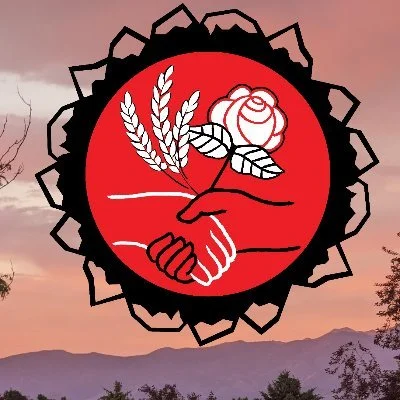

Grillidarity!
Join us this Sunday, October 29 3pm at the Labor Temple for some grilling, chilling, and organizing! We will be discussing how to mobilize and organize, and what’s the difference. Afterwards we will be grilling, and have some good ole Socialist Socialization! Workshop starts at 3 and cookout afterwards.
Grillidarity art is by local artist Gavin Herzog.

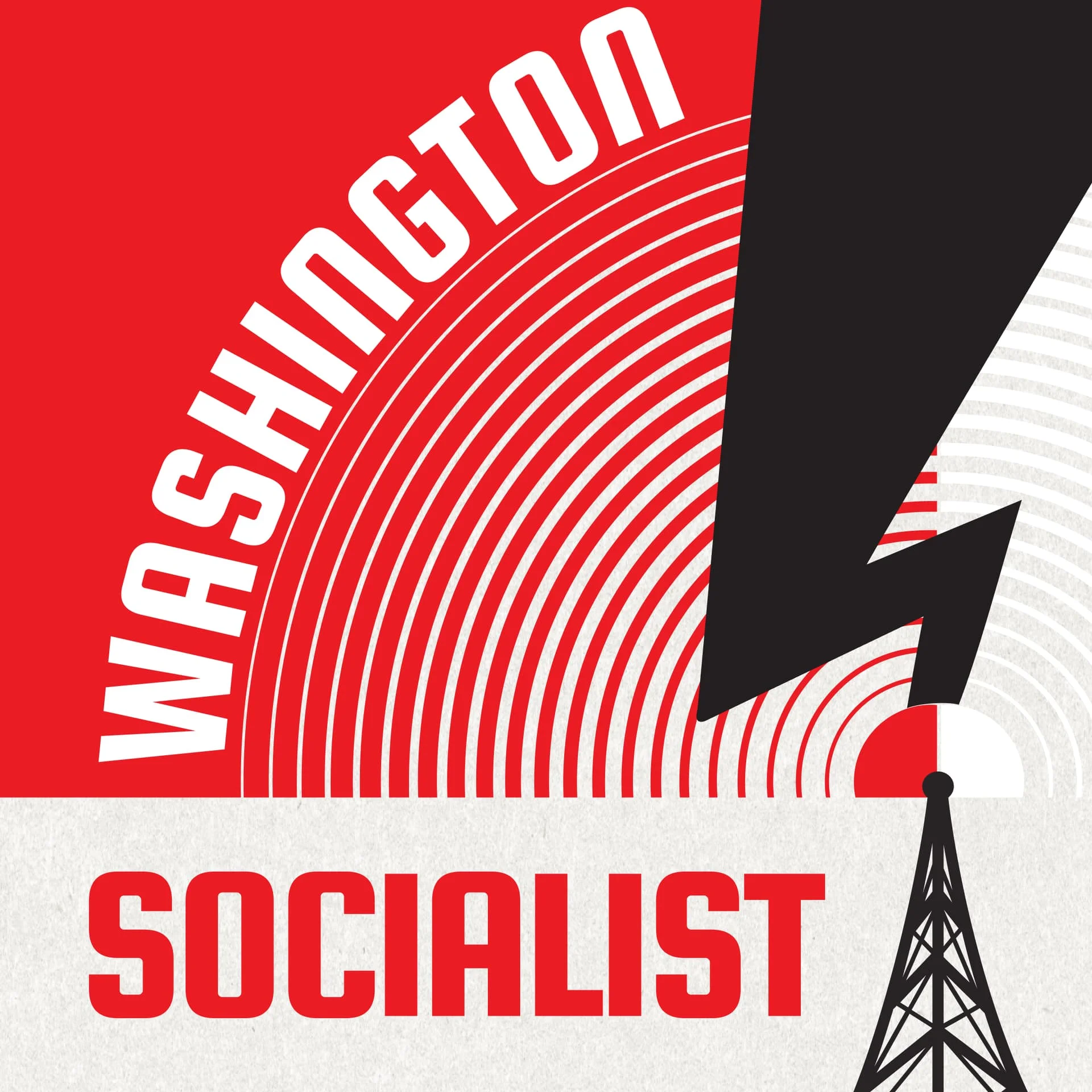

Liberals respond to Israeli war crimes with linguistic slaughter

Border country: migrant solidarity in New York City
Revolutions Per Minute explores migrant solidarity efforts in Brooklyn, exploring the broader context of the global migration crisis as Israel continues its military offensive against Gaza. RPM interviews people who have recently arrived in New York from Mauritania, and we meet Jaz Walker from Assemblymember Emily Gallagher's office.


A Successful Step on the Path to the Bolin Creek Greenway!
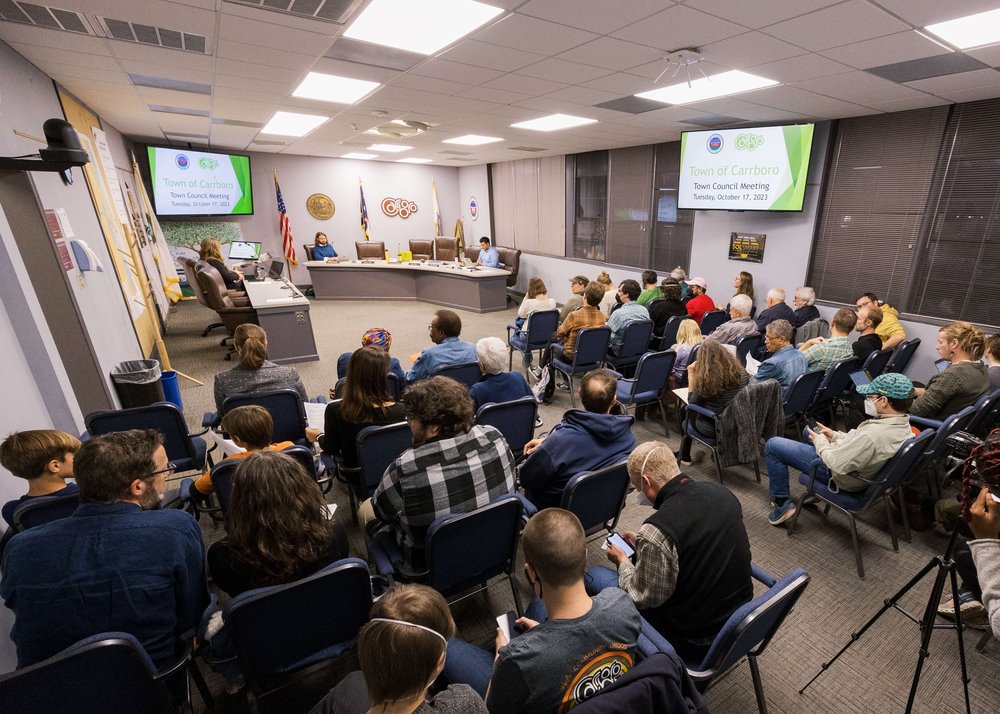
On Tuesday, October 17th, 2023, the Carrboro Town Council voted to move forward with the Bolin Creek Greenway selecting the path along the Creekside sewer easement as the preferred alignment. After over a decade of unnecessary delay, Carrboro will make progress toward a green infrastructure project that will play a crucial role in fighting the climate crisis on a local scale. The expanded greenway will create shared natural spaces that everyone can safely use to get around town and help cut off our car and fossil fuel dependency.
Our engagement with town showed that those who opposed this measure were, as expected, a small but vocal minority. Our petition for building the greenway eclipsed all others and the survey put out by the town showed overwhelming support for the creekside easement. Support for creekside by leading environmental groups like the Sierra Club show that the faux-environmentalist concerns are not substantiated. The direction of municipal governments are often swayed by the small but vocal but today, democracy won.
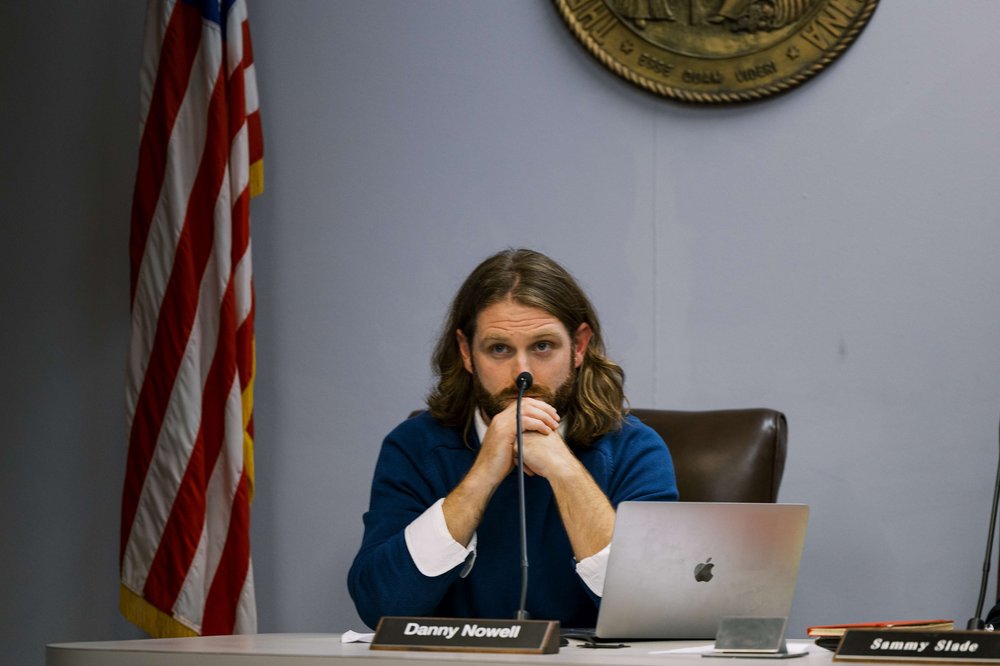
We are thankful for our partners in this fight including NEXT and Triangle Blog Blog as well as efforts made by our UNC chapter of the YDSA. They showed us that when progressive groups work together we can get amazing things done. We are proud of all our chapter members whose work in postering, writing, canvassing, and engaging community members delivered a crucial win for Carrboronians. We are thankful to the town council and staff for their efforts in ensuring that the many, and not the few, guided this public policy decision. And most of all, we are beyond excited to see y’all on the finished Bolin Creek Greenway.
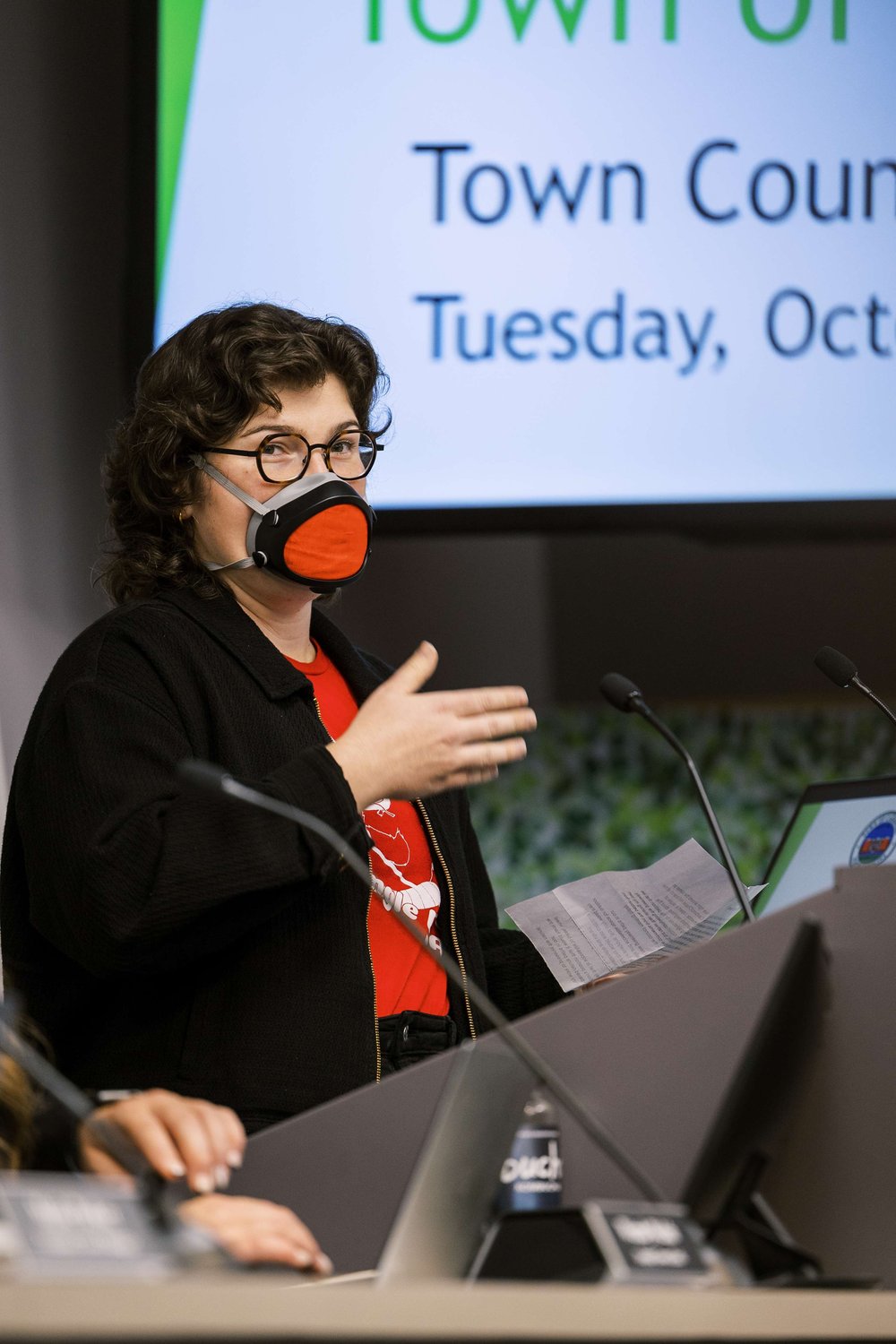


Act Now To Save Stop Ethnic Cleansing and Possible Genocide
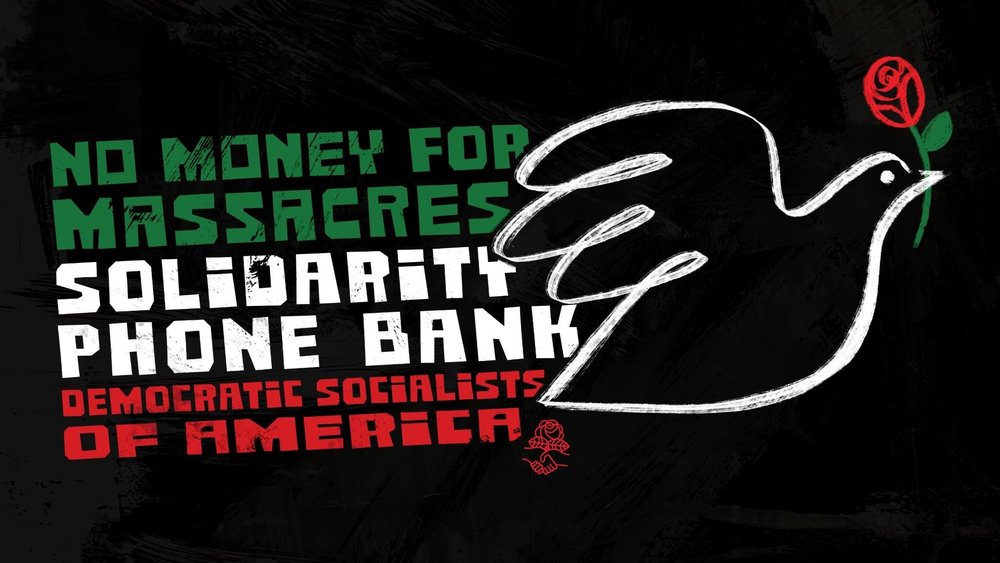
As Twin Ports DSA endorsed City Councilor Azrin Awal noted in her statement on October 16, Duluth is about the same length as the Gaza Strip. But Gaza has a population of 2 million people, compared to our 85,000. Israel has already dropped over 6000 bombs on Gaza during the past week, and an invasion is in the works. DSA has launched a No Money For Massacres phone bank campaign. Sign up to participate here.
Below is Councilor Awal’s statement in full.